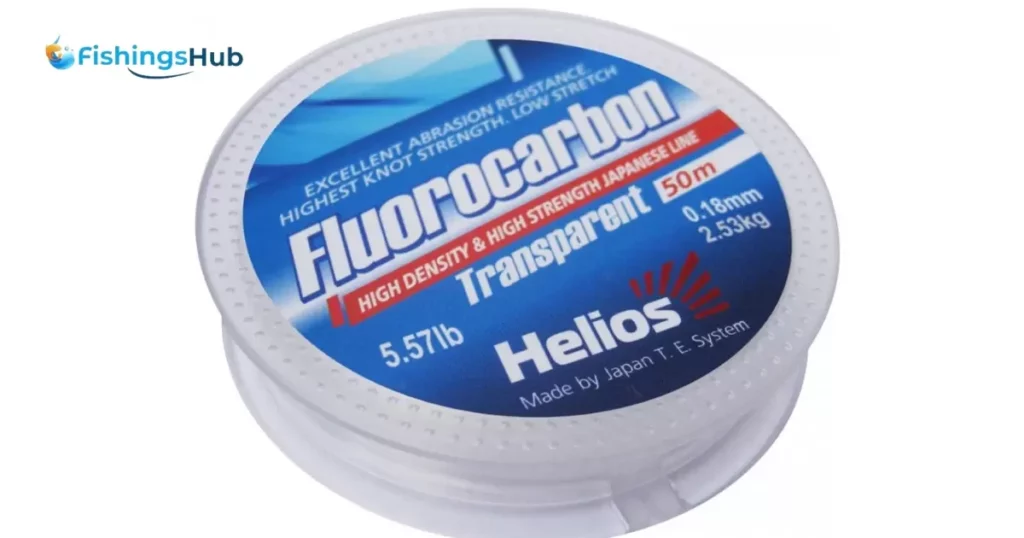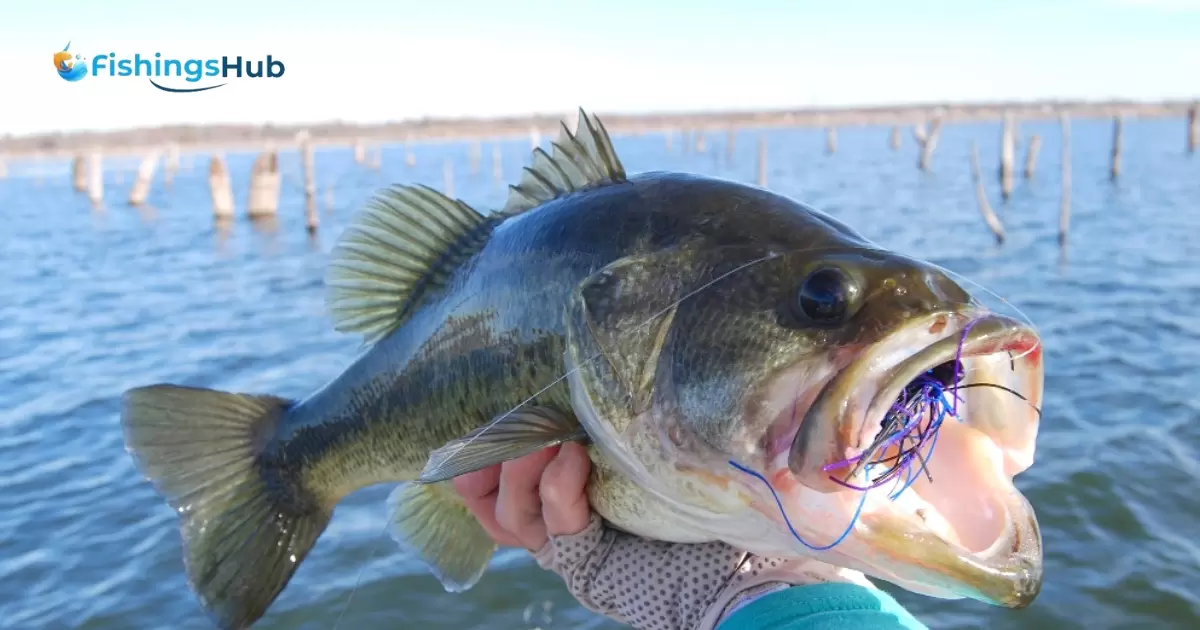For bass fishing, the term line refers to the essential fishing line used in angling for bass. It’s the crucial connection between the angler and the fish. The type of line used for bass fishing significantly impacts the success of the catch.
What Line Is Best for Bass Fishing? The answer lies in the balance between strength, sensitivity, and visibility. Choosing the right line is pivotal in enhancing your chances of a successful bass fishing expedition. The quest for the best line involves understanding the distinct features of various lines and how they align with different fishing conditions and techniques.
When determining the best line for bass fishing, several factors come into play. Monofilament lines offer stretch, fluorocarbon lines provide low visibility underwater, and braided lines offer exceptional strength. The decision on the best line hinges on the fishing environment, preferred techniques, and the behavior of bass in specific conditions. Understanding these nuances empowers anglers to make informed choices, optimizing their chances of reeling in that prized bass.
Understanding Bass Fishing Lines
Bass fishing lines serve as the crucial link between angler and catch, impacting the overall experience. They come in various types, each designed with specific characteristics to suit different fishing conditions. When selecting the right line for bass fishing, anglers need to consider the line’s material, weight, and visibility. It’s crucial to understand these nuances to make informed decisions. For example, when aiming to entice bass with topwater lures like Fish A Popper For Bass the visibility of the line becomes particularly important.
Monofilament Lines for Bass Fishing
Monofilament lines, known for their versatility and forgiving nature, remain a popular choice among bass anglers. Their stretch and buoyancy make them adept at handling the fight with bass, providing a bit of give that can assist in preventing hooks from tearing out. With a good balance of strength and flexibility, monofilament lines are excellent for casting lures and handling various bass fishing scenarios, making them a reliable choice for both beginners and seasoned anglers.
Fluorocarbon Lines and Their Role in Bass Fishing

Fluorocarbon lines, revered for their near-invisibility in water, are highly valued in bass fishing. Their low visibility attributes can be advantageous, especially in clear waters or when dealing with finicky bass. Furthermore, fluorocarbon lines possess a higher density than water, allowing them to sink faster, reaching desired depths swiftly. This sinking nature aids in presenting baits naturally to bass, enhancing the chances of a successful catch. Their abrasion resistance and minimal stretch are additional advantages, making fluorocarbon lines a preferred choice for certain bass fishing conditions.
The Benefits of Braided Lines in Bass Fishing
Braided lines stand out in bass fishing due to their remarkable strength-to-diameter ratio, offering unparalleled sensitivity and minimal stretch. This lack of stretch allows for instant hook sets, which is crucial when dealing with swift and often aggressive bass strikes. Additionally, their thin profile enables increased line capacity on reels, empowering anglers to spool more lines without compromising on strength. Braided lines also excel in heavy cover situations, slicing through vegetation to reach bass hidden in challenging spots, providing the necessary confidence for anglers to tackle even the most obstinate catches.
Comparing and Choosing the Best Line for Bass Fishing
Selecting the ideal line for bass fishing involves a careful assessment of various factors. Monofilament lines, characterized by their forgiving nature and versatility, suit beginners and all-purpose use. Fluorocarbon lines, with their low visibility and sinking capabilities, excel in clear waters or when targeting finicky bass. Braided lines, renowned for their strength, thin profile, and sensitivity, are ideal for heavy cover situations. Understanding the unique characteristics and best applications of each line type allows anglers to make informed choices, ensuring they’re equipped with the most suitable line for the specific conditions they’ll encounter while bass fishing.
| Line Type | Characteristics | Best Applications |
| Monofilament | Versatile, forgiving, some stretch | All-purpose, beginner-friendly |
| Fluorocarbon | Low visibility, sinks, minimal stretch | Clear water, finicky bass |
| Braided | High strength, thin, minimal stretch | Heavy cover, sensitivity |
Selecting the Right Line Weight for Bass Fishing
Choosing the appropriate line weight is vital in bass fishing, directly impacting an angler’s ability to handle different conditions. Lighter line weights, like 6-10 pounds, work well for finesse fishing, offering increased sensitivity and manoeuvrability for smaller baits. Medium line weights (10-17 pounds) strike a balance suitable for various bass fishing scenarios, providing strength without sacrificing sensitivity. Heavier line weights (18 pounds and above) are ideal for heavy cover situations, enabling anglers to wrestle big bass out of thick vegetation or structures. Understanding the specific requirements of the fishing environment and the size of the bass targeted is crucial in determining the most suitable line weight for a successful fishing outing.
Factors Affecting Line Strength in Bass Fishing
Several factors influence the strength and durability of fishing lines in bass fishing. Material composition, such as the quality of nylon in monofilament lines or the number of strands in braided lines, significantly impacts overall line strength. Diameter and pound test ratings also play a crucial role, affecting a line’s ability to withstand the force exerted by fighting bass or the abrasive elements in the water. Additionally, external factors like exposure to UV rays, water conditions, and storage practices can influence a line’s strength over time. Understanding these elements aids in selecting the most reliable and durable line to match the demands of bass fishing.
Techniques for Line Maintenance in Bass Fishing
Maintaining your fishing line is critical for optimal performance and durability. Regularly inspect the line for nicks, frays, or abrasions, especially after battling bass in rough terrains or against abrasive structures. Utilize a soft cloth or a line conditioner specifically designed for the type of line you’re using to wipe it down, removing any dirt or debris. Spooling the line correctly to avoid twists and ensuring it’s stored away from direct sunlight or extreme temperatures also extends its lifespan. Periodic line replacement, especially after strenuous fishing sessions, is essential to prevent unexpected breakage while targeting those prized bass. Employing these maintenance techniques not only enhances the longevity of your line but also ensures a more productive and secure fishing experience.
FAQs
What should I consider when choosing a fishing line for bass?
Consider factors like visibility, stretch, strength, and the fishing environment to select the most suitable line type for bass fishing.
How often should I replace my fishing line?
Replace your line when it shows signs of wear, such as nicks, frays, or weakened sections, especially after strenuous fishing sessions.
Are braided lines better than monofilament or fluorocarbon for bass fishing?
Each line type has its advantages; braided lines offer exceptional strength and sensitivity, while monofilament and fluorocarbon excel in different conditions.
How do I maintain my fishing line for optimal performance?
Regularly inspect the line for damage, clean it with a soft cloth or line conditioner, and spool it correctly to prevent twists and ensure proper storage.
Can I use the same fishing line for different bass fishing techniques?
While some lines are versatile, certain techniques might benefit from specific line types Understanding their characteristics aids in selecting the most appropriate line for each technique.
Conclusion
Selecting the right fishing line for bass isn’t just about picking a thread; it’s about understanding the water, the bass, and your own style. From the forgiving nature of monofilament to the near-invisibility of fluorocarbon and the robust strength of braided lines, each type offers something unique. By considering factors like line weight, visibility, and the fishing environment, anglers can make informed decisions to enhance their bass fishing experience.
In the end, it’s not just about the line; it’s about the connection it forms between you and the elusive bass. Maintaining the line’s integrity through regular checks, cleaning, and proper storage ensures it’s ready for the next adventure. Remember, the right line is best for bass fishing, providing the strength and reliability needed to reel in those prized catches.

